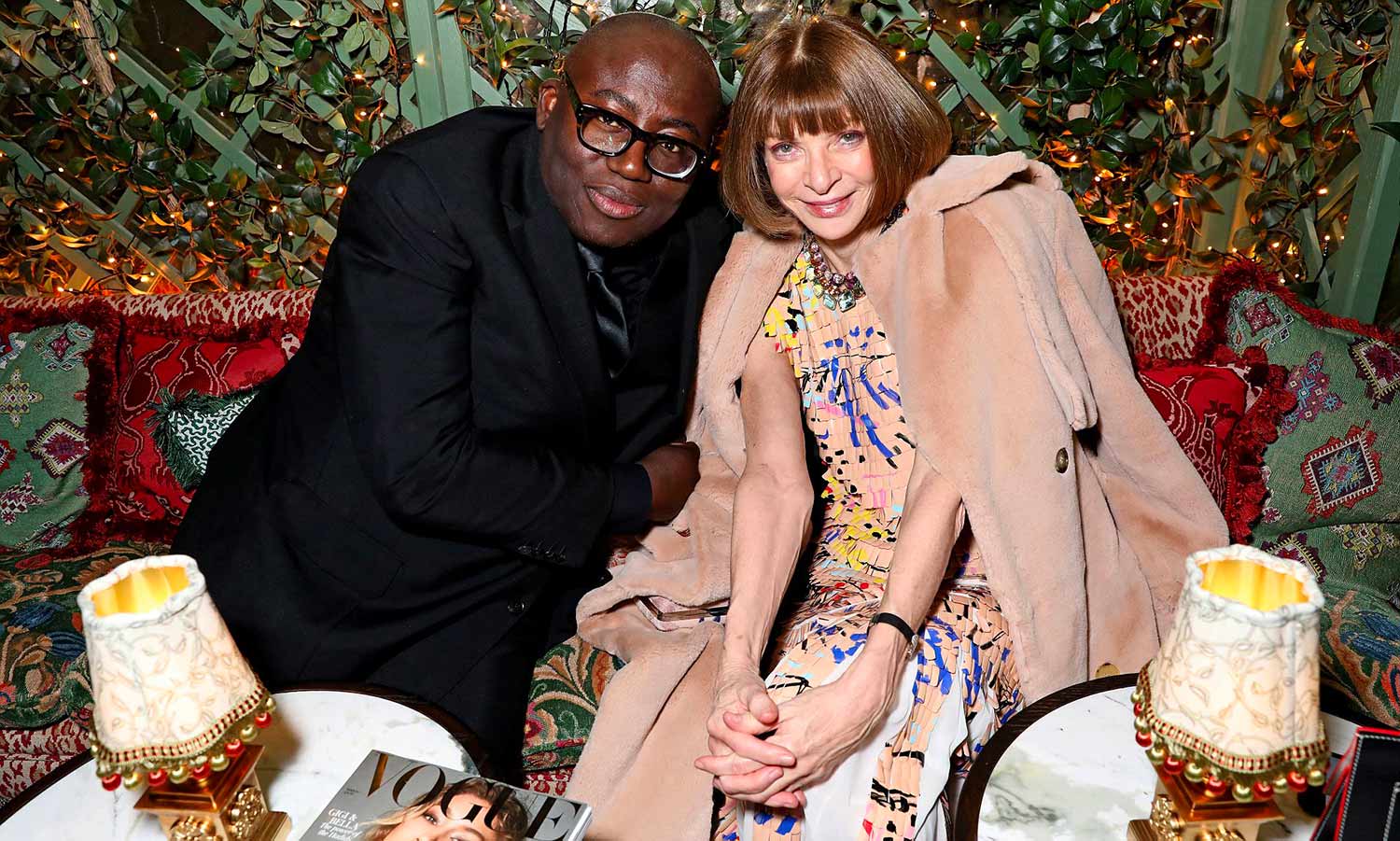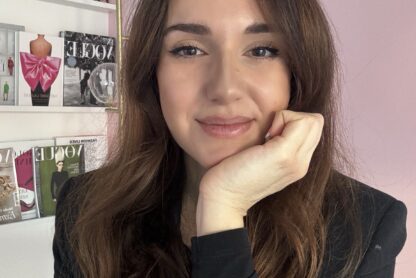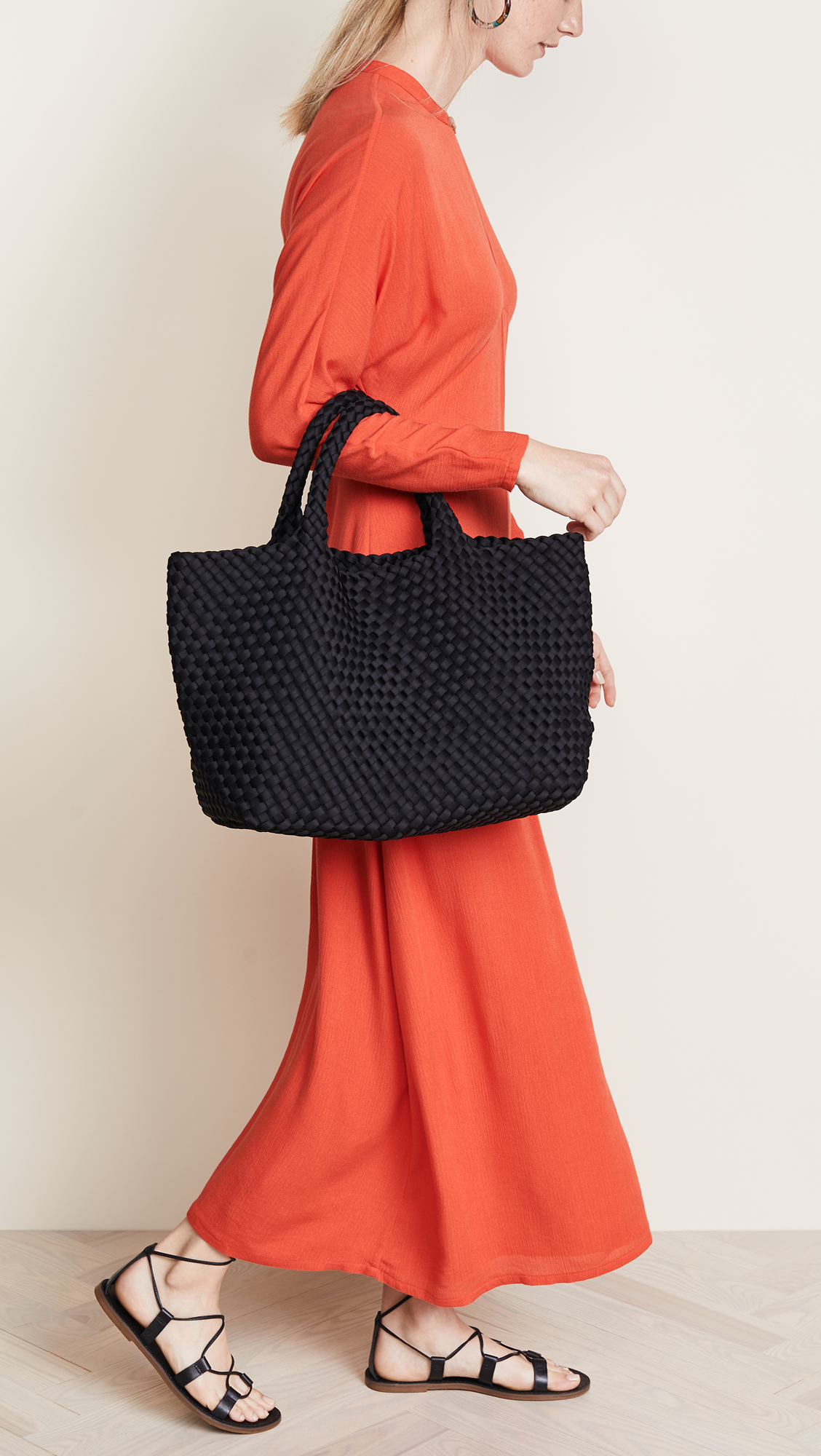There are creatives that shaped and pathed the way for change and innovation in the fashion industry yesterday, and there are even more controlling the industry today. In Part I of ‘Pioneering minds in fashion’, we have introduced you to five female fashion designers, that shaped and are still shaping the fashion industry. In this article we introduce you to five people who shape the fashion industry today, those who have sculpted, innovated and guided the industry over the past years, constantly thriving to implement aspects including diversity, accessibility and sustainability.
VIRGIL ABLOH
When we discuss the industry innovators today, Abloh is always one of them – An interdisciplinary mind; a DJ, stylist and designer -, infusing architectural aesthetics and knowledge into his new language- fashion.
Born 1980 in Rockford, outside Chicago, Virgil Abloh witnessed a humbled childhood. His mother, a seamstress, brought him closer to her craft, triggering his interest in the fashion industry. After completing his undergraduate degree at the University of Wisconsin-Madison, he commenced working together with Kanye West, before returning to University for his Master’s in architecture. In 2009, Abloh and West parallelly started an internship at Fendi Rome and visited the Paris Fashion Week tents to gain attention of fashion folks. With success – An image of the duo, outside the Comme des Garcons show becomes an iconic photograph in the streetwear field. “We got into about 60 percent of the shows,” Abloh tells W Magazine in 2017. “We were a generation that was interested in fashion and weren’t supposed to be there. We saw this as our chance to participate and make current culture. In a lot of ways, it felt like we were bringing more excitement than the industry was.” After working at an architecture firm for a period of two years, he decides to properly set his foot onto fashion ground, founding an RSVP Gallery, menswear store and Gallery in Chicago and joining West’s agency Donda as creative director later. With the start of his first label, Pyrex Vision, Abloh made industry connections through collaborations with designers from Heron Preston over Matthew Williams, until 2013, when his brand closed down. His solution: founding his new label Off-White, with which he succeeded and qualified for the finals of the LVMH prize in 2015. With Off-White, he understoof the demands of the time, dressing stars from the fashion and music industry, such as Asap Rocky or Beyonce. In 2018, he got appointed Creative Director of the heritage Luxury House Louis Vuitton, where he creates waves with his modern design approach – Innovating yet staying true to traditions. “It is an honor for me to accept the position of Men’s Artistic Director for Louis Vuitton. I find the heritage and creative integrity of the House are key inspirations and will look to reference them both while drawing parallels to modern times,” stated Virgil Abloh. His first show was held at the Palais Royal in Paris, where models walked on a rainbow-dyed carpet, to embody diversity and a new era of Vuitton. He is the mind proofing, that modernity in fashion does not disregard history and craft, but adds continuity to its path.
EVA CHEN
One of the probably most loved fashion figures on the social media market is Director of fashion partnerships at Instagram, Eva Chen. Born in 1979 in New York City she pursued a medical degree at the Johns Hopkins University in Maryland, and parallelly interned at Harper’s Bazaar US where she fell in love with magazines, fashion and beauty. (another successful existing proof you can work in fashion without a fashion degree ;))
After her graduation she worked at a law firm while continuously applying for positions at fashion magazines. The opportunity to work at a magazine arrived with the entry of 2002 and Chen’s newly commenced position as freelance fashion assistant at Lucky Magazine, where she stayed for two months. The same year an ex-colleague at Harper’s Bazaar US became Elle US’s beauty director, and emailed Chen about a job (lesson: stay in contact with contacts). She started off assisting the beauty and fashion departments, working with Carlyne Cerf de Dudzeele. In 2005, the then Teen Vogue Editor-in-Chief approached Chen and offered her the position as editor and beauty/ health director at the title. The position strengthened her editing skills, enabled her to mentor young editors and designers and made her expand into special projects with partner brands. In 2013, she got appointed Editor-in-Chief at Lucky Magazine. “Anna chose me to helm Lucky. It was a magical time with the best team, but when I fell pregnant, I didn’t really take maternity leave. It was offered to me but, as the magazine was going through a serious transition, it didn’t feel right. After a few months, it all became really hard, I left to spend time with my daughter, Ren.” she said to Glamour. Shortly after, in 2015, Eva Chen commenced her position as head of fashion partnerships at Instagram : “My role is to help the fashion community tell their Instagram story better, showing them creative options and coming up with strategies. The role isn’t that different to being a magazine editor – it’s still about getting the best work out of a contributor. But it’s cool to have an impact on a product that hundreds of millions of people use.” Chen also expanded into writing children books. With the story of Juno Valentine she reaches millions of families, bringing education wrapped into soft stories into international homes.
EDWARD ENNINFUL
That fairy-tales in the business of fashion do not exist, or at least are known as a rarity amongst is obvious. Yet is the believe and a piece of truth ever-present. An industry sculptor who has witnessed the spark of truth, is Edward Enninful – Editor-in-Chief of British Vogue. Enninful was born in Ghana and raised in a humbled neighbourhood of London. When in 1989 Simon Foxton, a London based Stylist approached him, his career in the fashion industry took off – As a model. “I was terrible at it. I hated the castings, all that objectifying. But I loved the process and the craft of creating an image.”
His first shoot for i-D brought him closer together with the photographer Nick Knight and catapulted Enninful into the position of Foxton’s assistant shortly after. “When I started working as a model I would always ask stylist Simon [Foxton] if he needed an assistant, and he would tell me it was a lot of work. I started helping him with castings and he introduced me to Nick Knight, the incredible British photographer, who then introduced me to i-D magazine,” he tells Vogue UK. At the age of 18, Enninful got offered the position as fashion director at the Magazine, becoming the youngest fashion director ever appointed at an international publication.
In 1998, he commenced his contribution to Vogue Italia, and began his position as a Contributing Fashion Editor to the American Vogue in 2005. This position was followed by his appointment to Fashion and Style Director at W Magazine in 2011 and Editor in Chief of British Vogue in 2017. “I wanted to reflect what I saw here growing up, to show the world as this incredibly rich, cultured place. I wanted every woman to be able to find themselves in the magazine”, he tells Time in 2019.
While Alexandra Shulman, former Editor in Chief of British Vogue left behind an almost white workforce and a history of 306 covers of which only 12 featured Black Women, Enninful thrives for change. His current editorial team is 25% people of color Shulman “represented her time, I represent mine.” For the cover of the Vogue issue, ’15 Forces For Change’, Enninful has collaborated with figures such as Meghan Markle – Guest Editor of the issue-, Adwoa Aboah, Adut Akech, Ramala Ali or Greta Thunberg. He is broadening the Magazine’s audience, infusing its heritage with an open-mindset and political relevance.
STELLA MCCARTNEY
Stella McCartney presented her graduate collection at Central Saint Martins in 1995. Her friends Naomi Campbell and Kate Moss modeledodelled the clothes, causing rumors and headlines. “I look back on that moment and feel a bit embarrassed that I was so naive,” she told Kirsty Young on BBC Radio 4’s Desert Island Discs. “They were my mates and that’s who I was hanging out with at college. Kate was even living with me for a period of time and that was what I was engaging with outside of my college life, so when it came to choosing the models for my degree show, I thought, ‘Well I might as well ask my friends’. I can understand why it was headline news and may have pissed my fellow students off a tad, but it was a very Brit moment.”
Conquering the industry at a time, in which males still dominated the domain of fashion, her design approach to serve the free and young female individual caused waves. “Women designing for women is really powerful and really important. There are very few of us, not enough of us. I’ve always said that behind a great man, there are many, many great women… There’s a lot of very impressive women working in the fashion industry but behind the scenes.” In 2001 McCartney established her eponymous label. The innovation that properly kicked-off her career in fashion, was the introduction of sustainable, animal-faux materials such as faux-fur or leather, recycled ocean plastic, bringing a futuresque perspective to the fashion world – an industry shaped by traditions and excessive consumption habits. The designer collaborated with companies from Gucci, over Adidas to H&M, marbling their handwriting with sustainability. “If everyone in the design world created a more sustainable product with more mindfulness, then it wouldn’t even be a conversation,” she told Dezeen 2018 in an exclusive interview. “But they’re not.” McCartney does not stop holding a mirror up to the fashion crowd. In response to the report A new textiles economy: Redesigning fashion’s future, produced by the Ellen MacArthur Foundation in 2017, McCartney said, “The report presents a roadmap for us to create better businesses and a better environment. It opens up the conversation that will allow us to find a way to work together to better our industry, for the future of fashion and for the future of the planet.”
A number of brands responded and reacted positively, yet does she callout to the whole industry. “For me, preserving and respecting the planet is fundamental to what I do and I always try to make an effort to consider that in my designs.”
ANNA WINTOUR
We all know her. Her impeccable style and influence on the fashion magazine landscape, mainly connected to the evolution of the American Vogue. Anna Wintour.
Anna Wintour was born into a wealthy family on November 3, 1949 in London, England. Her father, Charles Wintour, was a newspaper editor of the London Evening Standard, whilst her mother, Elinor Wintour, served the role of a philanthropist. In R.J. Cutler’s documentary The September Issue, Wintour said “Growing up in London in the Sixties you would have to be walking around with Irving Penn’s sack on your head to not realise that something extraordinary was happening in fashion. The look of the girl then and everything that was going on then, the pill and the emancipation of women and the end of the class system, just sort of seeing that revolution go on made me love [fashion] from an early age.”
After her first industry steps at Biba and Harrods, Wintour gained experience at magazine Oz, followed by Harper’s & Queen. Her decision to move to New York led her to the position as junior editor at Harper’s Bazaar, which she left for Viva and Savy in the 1980’s. From Savy, a magazine for the autonomous, emancipated woman, Anna Wintour was selected by Alex Liberman, to execute the position of the creative director at American Vogue, which she served until 1985, when she was announced the editor-in-chief of the British Vogue and moved back to London.
In 1987 she resettled to New York to take over House& Garden and Vogue in 1988.
Today, Anna Wintour is popular for being one of the industry icons, responsible for bringing a modern, educated and emancipated audience to the Magazine, wrapped in today’s Zeitgeist. Her focus and consistency carried fruits. American Vogue reaches over 12 million readers in print and 1.2 million monthly visitors online.
She says about journalism: “Today’s audience – not just Vogue’s audience, every audience – wants journalism to take a stand. People want to know what you believe in and what you stand for. In this time of fake news, when there is so much disregard for truth and value and for support.”Her character and influence are being used as inspiration for a variety of films, including ‘The Devil Wears Prada’. “If one comes across sometimes as being cold or brusque, it’s simply because I’m striving for the best.”
Words by Lilly Meuser









